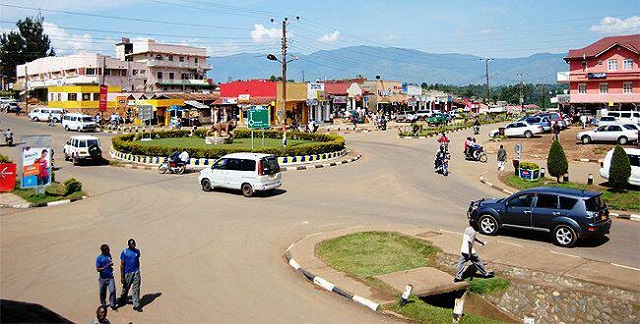FORT PORTAL CITY
Fort Portal City : The marvellous city found in Kabarole District in western Uganda was named after Sir Gerald Herbert Portal. Sit Gerald Portal was a British administrator appointed as British Special Commissioner to East Africa in 1892 and was delegated to visit Uganda in order to establish whether the area was worth becoming a British Protectorate as a need to replace the ceasing to function Imperial British East Africa Company. The fort was later constructed in the late 1800s as a way to protect the Tooro Kingdom from King Kabalega of Bunyoro and his persistent guerrilla raids hence the name Fort Portal.

Today, his statue graces the main road of the town. Several crater lakes and the Semliki Valley also lie near the town. . All these are important factors in the culture of Fort Portal. Fort Portal or Kabarole is a “Tourism city of Uganda”, located in the Western Region of the country. It is the seat of both Kabarole District and the Toro Kingdom.
Fort Portal is located approximately 296 kilometers (184 mi) by road, west of Kampala, Uganda’s capital and largest city, on an all-tarmac two-lane highway. The coordinates of Fort Portal are 0°39’16.0″N, 30°16’28.0″E (Latitude:0.654444; Longitude:30.274444).[5] Fort Portal is situated at an average elevation of 1,523 metres (4,997 ft) above sea level. The population in Fort Portal City was estimated to be 60,800 people as of 2020 by UBOS with an average population growth rate of 2.12% annually (2014-2020). The population has been on a steady increase given it’s wonderful nature and location. In August 2014, the national population census put the population at 54,275 after standing at 41,000 in the 2002 national census.

It is an important market and processing centre for cotton, peanuts (groundnuts), sesame, corn (maize), coffee, tobacco, castor-oil seeds, tea, tropical fruits, and vegetables. A number of tea estates are concentrated east of the town. Tea, coffee, vegetable oils, leather, fruit, dairy products, meat, cotton, grain, and tobacco are processed. Industrial products include beverages, textiles, furniture, paper, soap, confectionery, shoes, and metal goods.
The major activity carried out in Fort Portal City is tourism, the major attractions being; Crater lakes, gorilla tracking, hot springs. Give its gifted nature Fort Portal has come to be branded as the tourism city in Uganda. The many places to visit my tourists have earned the name for the city.
The major ethnic group occupying Fort Portal City is the Batooro. The Batooro have a rich tradition and cultural customs, indigenous handicrafts and patriotism. Culture is paramount among the Batooro and is inculcated in every child. Children are taught to respect and value elders, love and be proud of their tribe. Another interesting thing about Batooro is their culture of giving pet names(names of endearment), what they call “Empaako”. In addition to the name the world will know the child by, each mutooro child is given one of the ten “empaako” names. The empaako names are: Abbala, Abbooki, Abwooli, Acaali, Adyeeri, Akiiki, Amooti, Apuuli, Araali, Ateenyi, Atwooki.
There is a twelfth one, Okaali, reserved only for the Omukama (king). Okaali is very special in that it is not for everyday use to greet the Omukama. It is used on occasions when our tradition elevates the Omukama to the rank of our gods.
When we “worship” our king, we address him as Okaali. The Omukama is the only mutooro with two empaako names. Upon becoming the Omukama, no matter what hisempaako was before, he takes the empaako Amooti. This is the one we use to greet him on an everyday basis. On special, traditional ceremonies and rituals, we greet him as Okaali.
Some Bakiga may also be found in Fort Portal City. These moved from south western Uganda to live in Fort Portal.


